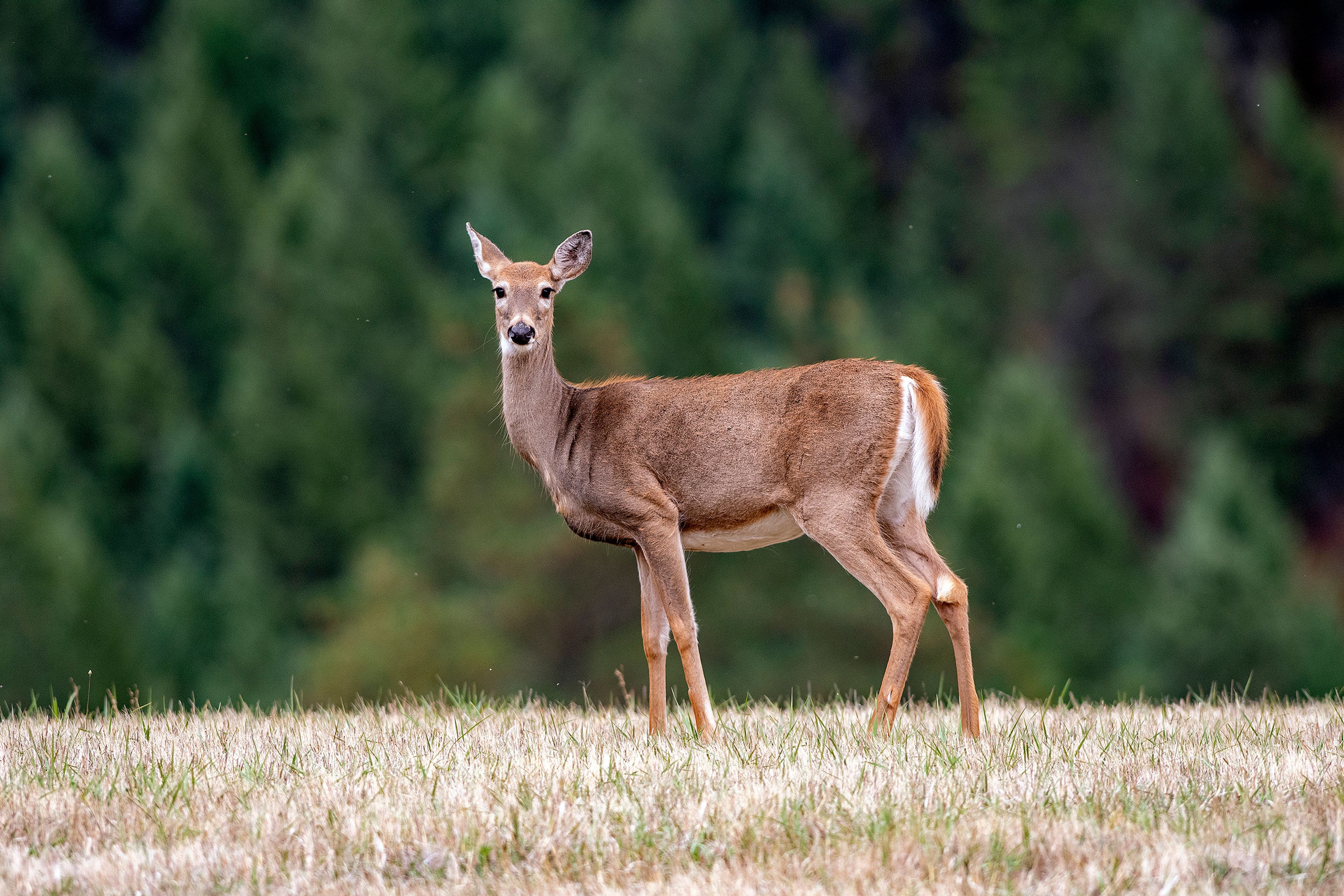Washington officials confirm CWD case in Spokane County
Another case of chronic wasting disease has been confirmed in Washington, wildlife officials said recently.
The Washington Department of Fish and Wildlife announced that it had confirmed the disease in a male white-tailed deer killed by a hunter on the opening weekend of the state’s modern firearm season.
Lymph nodes from the deer were collected by WDFW staff after the deer was killed and sent to the Washington Animal Disease and Diagnostic Lab in Pullman on Oct. 16. WDFW said in a news release that it learned of the test results last week.
It’s the state’s second confirmed case of the always-fatal disease, and it came from the same part of Spokane County. The buck was killed about 5 miles north of where the first CWD-positive whitetail deer was found earlier this year, according to WDFW.
Donny Martorello, chief of WDFW’s wildlife science division, said in a news release that because of the location, “this positive test result is not a complete surprise.”
The sample is one of more than 1,000 gathered from hunter-killed animals this fall, and it comes as Washington’s late modern firearm season for whitetail deer winds down. The season closed last week. Late archery and muzzleloader seasons are still to come.
That means WDFW is set to receive even more lymph nodes for CWD testing, particularly from game management units 124, 127 and 130, where CWD testing is required for all harvested deer, elk and moose.
Agency officials will run check stations in Deer Park, Colbert, Usk and Colville to collect samples from hunter-killed animals. Kiosks and freezers are also available throughout eastern Washington for hunters to collect and submit samples on their own.
Each test informs WDFW’s understanding of the scope of the disease, which is known to have major impacts on wildlife populations when left unchecked.
CWD infects cervids, such as deer, elk, moose and caribou. It’s caused by malfunctioning prions in an animal’s body, and it attacks the animal’s nervous system. Sick animals eventually can become emaciated and behave erratically, though symptoms often don’t show until the late stages of the disease.
Infected animals shed the prions in feces and urine, and they spread to healthy animals through direct contact. Prions also persist on the landscape for an extended period of time.
The disease is not known to infect humans, but health officials advise against eating the meat of infected animals.
Thirty-five states and five Canadian provinces have detected the disease within their borders.
Of the states and provinces bordering Washington, only Oregon remains free of CWD.
Idaho first detected it in 2021 in the White Bird area, but wildlife managers are tracking a new outbreak in the Panhandle region. Three deer near Bonners Ferry have tested positive .
Washington announced its first case in early August. The deer responsible for the positive test had been found dead in the Fairwood area of north Spokane months earlier but wasn’t tested until July.
WDFW had approved a CWD management plan , having expected the disease would eventually arrive, and officials soon announced the mandatory testing rule and other measures meant to limit the spread.
Wildlife feeding was banned in parts of Spokane County, and the use of bait for hunting was prohibited.
Both measures are meant to keep people from encouraging the animals to congregate in large numbers, which can accelerate the spread.
The agency prohibited transporting dead animal parts out of eastern Washington, which meant that successful hunters were required to debone their meat before hauling it out of the region. Carcasses are known to be a potential vector for moving CWD from one place to another.
More than 1,300 CWD samples have been gathered since this summer. Of those, 1,024 have come from hunter-killed animals, while the rest have come from salvaged animals or carcasses WDFW staff have found.
Whitetail deer account for most of the samples — 685. Samples have also been taken from 153 deer and 461 mule deer.









